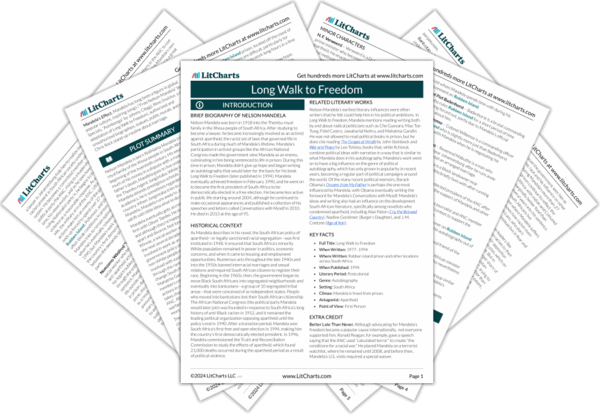African National Congress (ANC) Quotes in Long Walk to Freedom
My devotion to the ANC and the struggle was unremitting. This disturbed Evelyn. She had always assumed that politics was a youthful diversion, that I would someday return to the Transkei and practice there as a lawyer.
I did not regard the verdict as a vindication of the legal system or evidence that a black man could get a fair trial in a white man’s court. It was the right verdict and a just one, but it was largely as a result of a superior defense team and the fair-mindedness of the panel of these particular judges.
In planning the direction and form that MK would take, we considered four types of violent activities: sabotage, guerrilla warfare, terrorism, and open revolution. For a small and fledgling army, open revolution was inconceivable. Terrorism inevitably reflected poorly on those who used it, undermining any public support it might otherwise garner. Guerrilla warfare was a possibility, but since the ANC had been reluctant to embrace violence at all, it made sense to start with the form of violence that inflicted the least harm against individuals: sabotage.
The High Organ was the source of some controversy because of its ethnic composition: all four permanent members were from Xhosa backgrounds. This was a matter of coincidence rather than design; the senior ANC leadership on the island, the only four to have served on the National Executive Committee, happened to be Xhosa. It would not have been proper to take a less senior comrade and put him on the High Organ simply because he was not a Xhosa. But the fact that the High Organ was Xhosa-dominated disturbed me because it seemed to reinforce the mistaken perception that we were a Xhosa organization.
Despite his seemingly progressive actions, Mr. de Klerk was by no means the great emancipator. He was a gradualist, a careful pragmatist. He did not make any of his reforms with the intention of putting himself out of power. He made them for precisely the opposite reason: to ensure power for the Afrikaner in a new dispensation. He was not yet prepared to negotiate the end of white rule.












